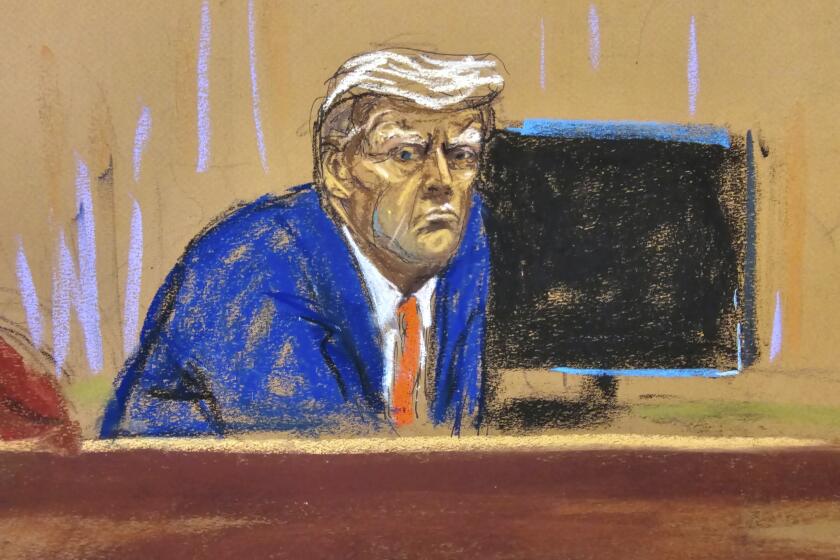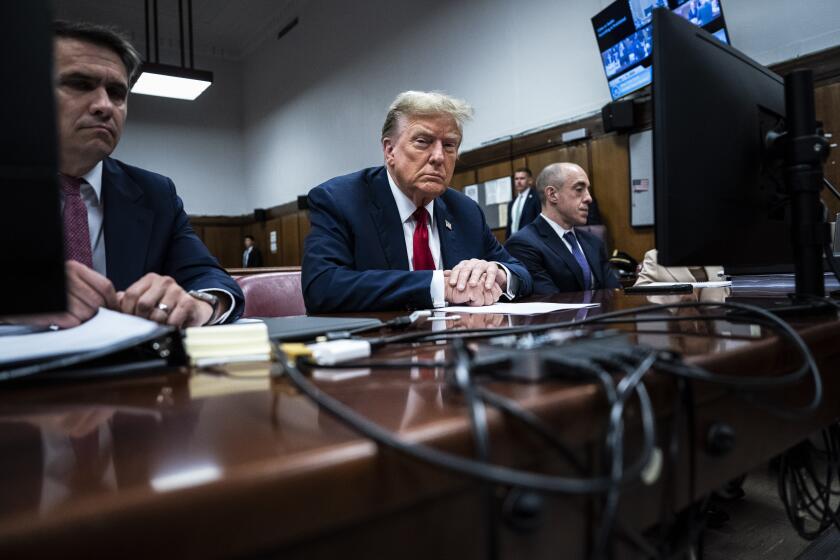Brooklyn’s Sunset Park, built and rebuilt by immigrants, sees change once again
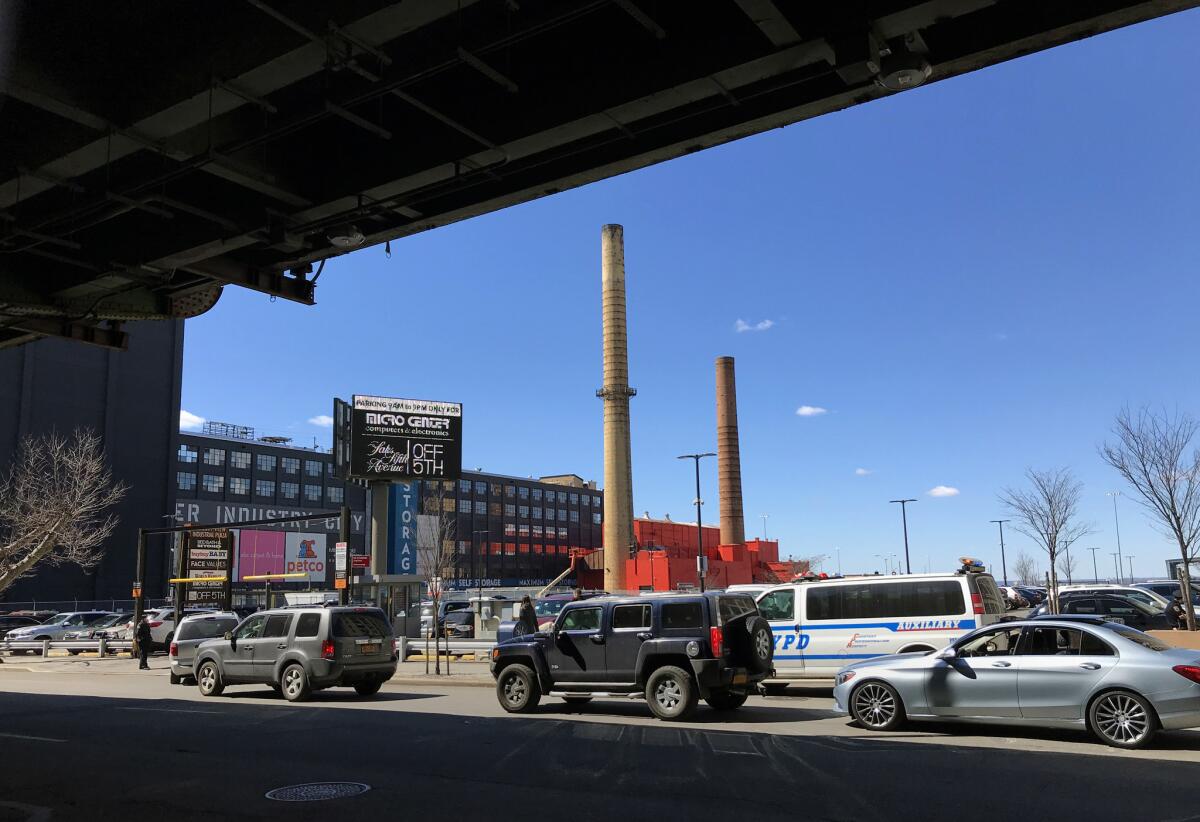
Down at the water’s edge in southwestern Brooklyn, in a refurbished industrial building, lines spilled out the doorways of eateries peddling $7 avocado toast and $12 pulled pork sandwiches.
On this cold winter’s day, families lunched at tables inside faux-Native American tents set up in an outdoor courtyard.
At the far end of the building, in a room teeming with children, parents wearing baby carriers sipped wine and beer next to floor-to-ceiling windows offering views of the Freedom Tower. A band played bossa nova music and Bob Marley covers.
This is the new face of Industry City, a complex of former manufacturing buildings in the Sunset Park neighborhood. Named after a hilltop park that looks out to the Statue of Liberty, the neighborhood has since the 1800s attracted immigrants with steady blue-collar work on its waterfront and easy access to Manhattan.
Today it remains home to a diverse group, divided loosely into two sections. Along 5th Avenue to the west, bakeries famed for their pastel de elote, taquerias and money transfer businesses cater predominantly to a Dominican, Puerto Rican and Mexican population. Along 8th Avenue to the east, shelves stacked with pork and red-bean buns, hot pot restaurants and banks populate Brooklyn’s first Chinatown.
But in the last several years Sunset Park, like many immigrant neighborhoods across New York City, has begun to be reshaped by the forces of rising property values and a growing educated, middle- to upper-class population. The redeveloped buildings along the waterfront and the people they attract are the face of that change.

“Industry City is the classic iconic symbol of gentrification arriving in the neighborhood,” said Van Tran, a sociology professor at Columbia University who researches immigration and ethnic neighborhoods. “West of 4th Avenue has been a neglected, abandoned waterfront complex, and now that entire area is being revitalized and gentrified.”
While some celebrate the renewed interest, amenities and safer streets that accompany a more well-to-do population, others worry longtime residents and businesses will get pushed out. Tenants have sued landlords, alleging they are being forced out. Mom-and-pop shops have downsized or shuttered their gates. Some people have fled to Staten Island, New Jersey or Pennsylvania.
“The human scale that Brooklyn was known for — that made it a borough of communities — is now disappearing,” said Elizabeth Yeampierre, executive director of the social-justice organization UPROSE. “Our successes are leading to the displacement of our community.”
Sunset Park, originally settled by the Canarsee tribe and then the Dutch, was an agricultural neighborhood until the mid-1800s, when Irish immigrants fleeing the potato famine helped build new housing and a horse car line.
Later came the Poles, Norwegians and Finns, the last of whom established the first cooperative housing in the U.S. At the turn of the century came the Italians. By 1930 much of the neighborhood’s present housing stock — rows of low wood, brownstone and brick houses — had already been built.
Many of the immigrants worked on the waterfront, as shipbuilders, riggers, sailors and dock workers. They also found work at Bush Terminal, a freight-handling terminal with piers, warehouses and factory lofts linked by a railway, and at Brooklyn Army Terminal, a large military supply base completed in 1919.
But the neighborhood suffered amid the Great Depression, post-World War II white flight and the decline of the local maritime industry. By 1970, like much of New York City, it was in decay.
The arrival of Puerto Ricans and, later, immigrants from Latin America and China — together with the rebuilding of a local hospital and some government aid — changed that.
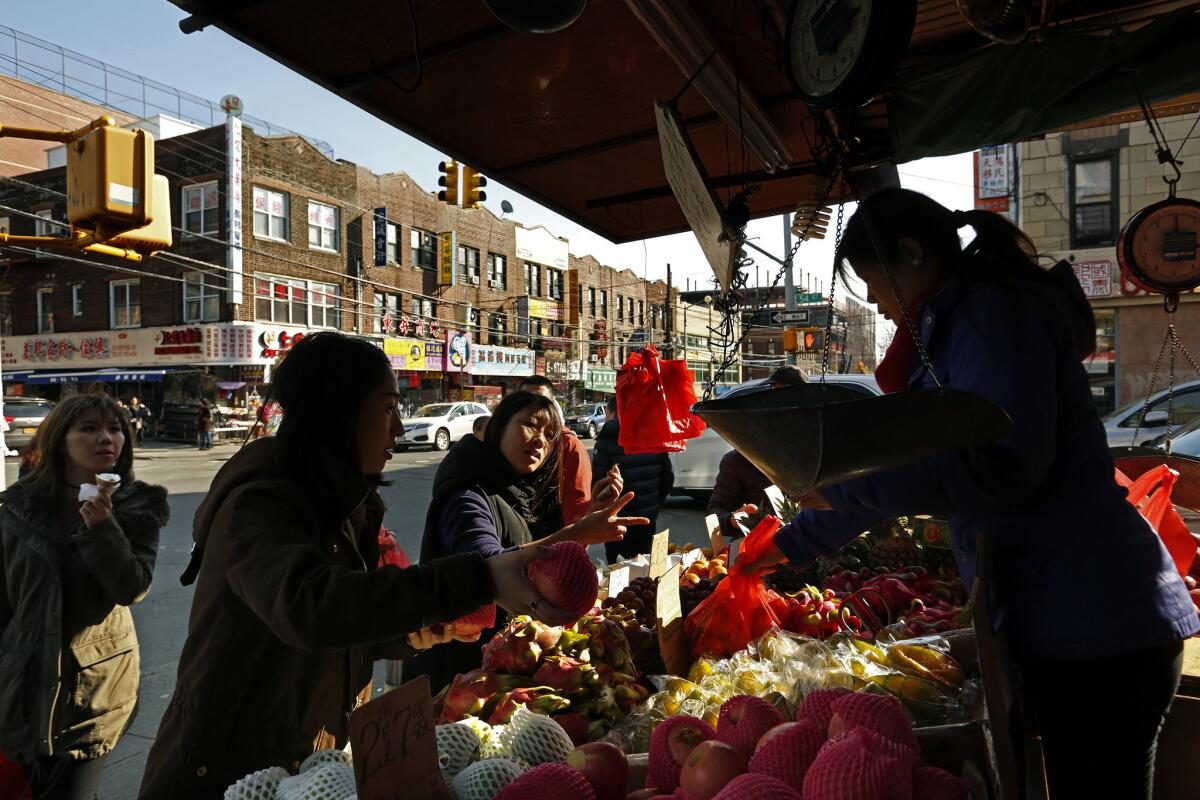
“Immigration was central to the revitalization of the city,” Tran said. “Immigrants often had no sense of reference, so they would just set out in affordable places to live … and then they’d revitalize them because they wanted to create a home for their families.”
Robert Aguilar’s parents were among those immigrants. Originally from Puebla, like many Mexicans in the area, they settled in Sunset Park in 1972.
Aguilar’s dad found work in a textile machine shop, his mom at a toy factory and his uncle at a leather goods manufacturer. Aguilar, 44, remembers walking to and from school, the smell of candy from nearby factories wafting through the air. At Christmas his mother would make tamales and invite the family’s Polish, Irish, Norwegian, Puerto Rican and Cuban neighbors.
“It was great — it was a typical Brooklyn story,” Aguilar recalled. “It was one gigantic melting pot where it was a lot of fun.”
Later, his parents bought the three-family brownstone where they lived, eking out $500 a month for the mortgage. Today Aguilar, who lives around the corner, has two young children of his own and wants them to have the diverse experience he had.
But as property values rise and more affluent residents move in, Aguilar worries that may be harder for them.
“There’s more white people in the neighborhood, so the concern is always people being displaced. That’s a big fear,” he said.

In the last several years, Sunset Park, like many immigrant neighborhoods across New York City, has begun to be reshaped by the forces of rising property values and growing numbers of educated middle-class and upper-class people. The redeveloped bui
Aguilar, who owns his apartment, has less to worry about than those who rent.
Gerardo Garcia lives with his wife, in-laws and two sons, 8 and 3, in a one-bedroom rent-regulated apartment that has been in the family for decades. He said he doesn’t mind the arrival of Industry City and a new crowd, as he thinks they’ve brought more jobs and increased public safety.
But, he said, he wants to move to a new place so his children can have more space. With two-bedroom apartments in the area now renting for $2,000, he doesn’t see how that’s possible: He works at a fast-food restaurant and his wife at a Sephora beauty store.
“If the rents keep rising, we are going to have to leave — maybe for New Jersey,” Garcia said in Spanish as his boys climbed on top of him and ran around a corridor in one of the Industry City buildings.
Between 2000 and 2017, the median sales price per unit in a one-family building in the Sunset Park community district increased from about $346,000 to almost $1.3 million, according to New York University’s Furman Center for Real Estate and Urban Policy. Over roughly the same period, the percent of people aged 25 and up with a bachelor’s degree or more increased from 16.5% to 27.6%.
Both are typical of gentrifying neighborhoods, Tran said.
“These people, middle-class professionals, are also being pushed out from their neighborhoods in search of more affordable housing,” he said.
Krissa Corbett Cavouras, 37, has watched the change even as she’s been a part of it.
In 2007, while searching for a home to buy, Corbett Cavouras and her husband fell in love with an apartment in one of the remaining Finnish co-op buildings in Sunset Park. At the time, the building’s residents were mostly older, working-class and immigrant, she said. Today, they tend to be middle-class, young professionals coming from other, pricier neighborhoods in Brooklyn.
In the last few years Corbett Cavouras, who has a master’s degree and recently had a baby, began receiving unsolicited letters and phone calls from realtors about selling her home. She was even approached on the street with offers. Three hipster coffee shops opened up within blocks of one another.
“I feel like I’ve lived here a long time, but there are people who’ve lived here 40, 50 years and raised their kids. It must be really jarring for them,” she said.
“I may be part of the problem,” Corbett Cavouras admitted, but she said she has sought to tread lightly and embraced the community that pre-dates her arrival.
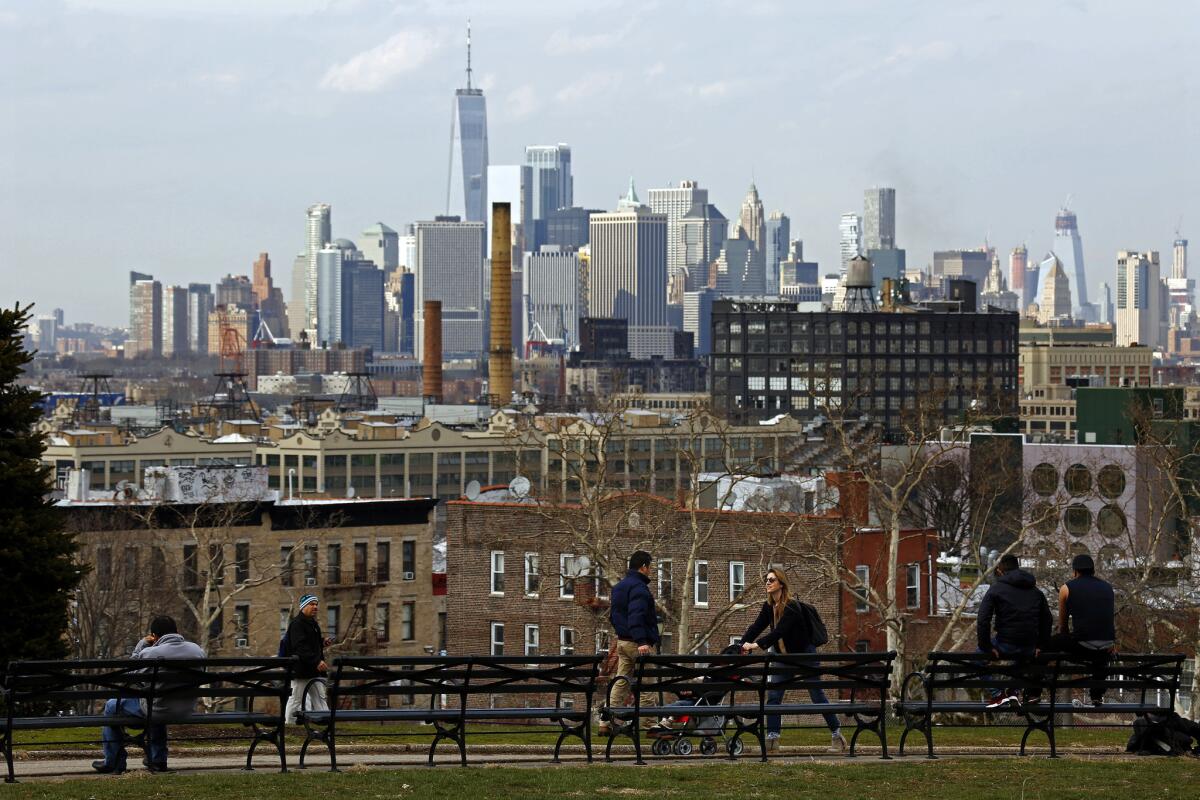
Walking through the neighborhood’s namesake park, Corbett Cavouras pointed out patches of grass where Mexican and Dominican soccer teams play in the summer, chess tables where old Chinese men debate one another loudly, and shaded areas under London plane trees where young girls pose for quinceañera photos.
“The neighborhood’s not just a place for people to move into, it’s not a blank canvas,” she said. “It has its own history, its own characters.”
So far, Sunset Park beyond the waterfront has retained its immigrant character. On a recent Saturday night a popular Mexican restaurant near the park was full of Spanish-speaking families. Along the main drag in Chinatown, hardly a word of English could be heard.
“In Sunset Park gentrification is not complete for two reasons,” Tran said. “On the Latino side...there’s a lot of community organizations that actively push back against gentrification. And then there’s the Chinese piece of the story.”
Since the 1990s the Chinese population in Sunset Park has grown rapidly, today making up about one-third of the neighborhood’s estimated 130,000 people. While many of the new arrivals are working-class, capital from wealthy Chinese has also financed local businesses and properties.
“It’s gentrification from within the ethnic community,” Tran said. But because social ties cut across class, he said, working-class Chinese benefit too.
Along 8th Avenue, once nicknamed “Lapskaus Boulevard” after the Norwegian stew, Chinese businesses are thriving. Produce markets, jewelers, banks, beauty salons and laundromats cram the streets of what is now “Little Fuzhou.” Pedestrians vie for space outside the best stores. The smell of fish hangs in the air.
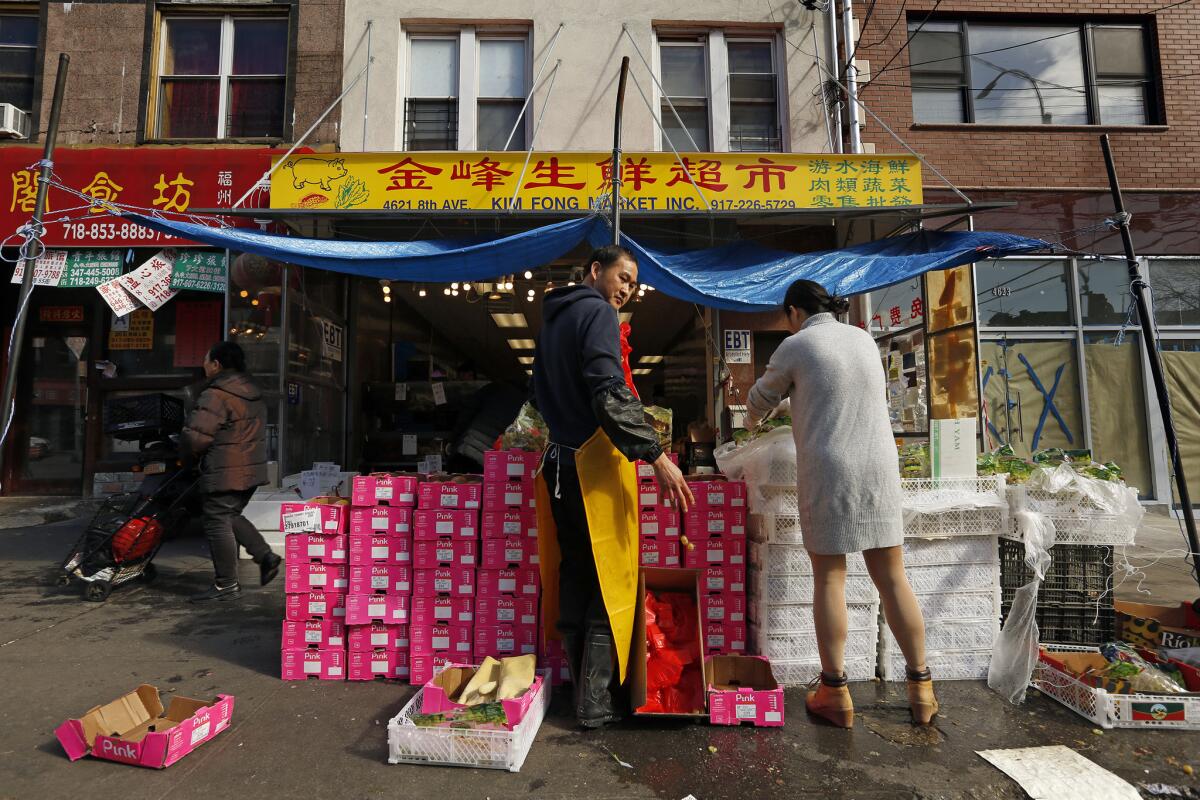
Toward the southern edge of Sunset Park, the Soccer Tavern, established in 1929, offers a glimpse of the neighborhood’s past — and future.
On a recent weekday afternoon Bob Dantuono, an Italian American electrician, swigged a pint of Guinness while watching a horse race. Behind the bar Brendan Fitz, an Irish American who has lived his entire life in Sunset Park, served up a Jager shot to Dantuono’s friend. In front of another TV, Jason Xie, a truck driver, clapped a friend’s back in excitement as a soccer team approached a goal.
Xie, who immigrated to the U.S. in 1991, was one of the first Chinese people to start coming to Soccer Tavern, more than two decades ago. Back then, most of the bar’s patrons were Norwegian and Irish. Not so today.
“You can tell by the names,” Xie, 44, said, pointing out plaques for the bar’s dart league. From 1998-1999: Farley, Luno, O’Sullivan, Connolly, Hennessy. From 2013, when Xie served as captain: Mei, McGuire, Tsang, Cheong, McNamara.
Patrons of the bar once cheered the Norway Day parade on its doorstep. Now costumed lion dancers bring them good luck during Chinese New Year.
“This bar is like the borough of Brooklyn itself,” Xie said.
And, he added, it’s not going anywhere.
Twitter: @AgrawalNina
More to Read
Start your day right
Sign up for Essential California for news, features and recommendations from the L.A. Times and beyond in your inbox six days a week.
You may occasionally receive promotional content from the Los Angeles Times.




